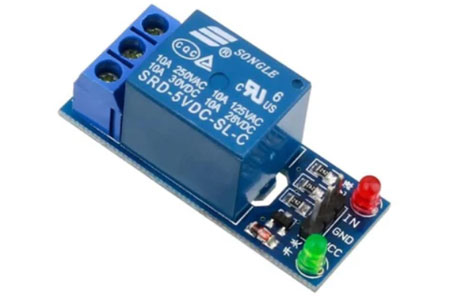Why Relay Is Used In Motor Control
Key Takeaway
Relays are used in motor control to provide protection and ensure efficient operation. They help manage various aspects of motor functionality, such as detecting faults in a 3-phase system through phase monitoring relays. Alternating relays are used to balance the load usage among multiple motors, enhancing their lifespan and performance. Additionally, specific types like pump seal failure relays are crucial for monitoring the integrity of submersible pump shaft seals. By integrating these relays into motor control systems, they help prevent damage and downtime, ensuring that motors run smoothly and reliably under different conditions.
The Importance of Relays in Motor Control Systems
Relays play a crucial role in motor control systems by acting as intermediaries between the low-power control circuits and high-power motor circuits. They ensure that small control signals can safely switch larger loads, protecting both the control system and the motor. This separation enhances safety, as it prevents high voltages from reaching the control panel, thereby reducing the risk of electric shock. Additionally, relays provide reliable switching and can be used to implement complex control logic, such as starting, stopping, reversing, and speed control of motors, making them indispensable in motor control applications.

How Relays Contribute to Efficient Motor Operation
Relays contribute significantly to efficient motor operation by ensuring precise control over motor functions. They enable smooth starting and stopping of motors, which reduces mechanical stress and prolongs motor life. By incorporating relays, engineers can implement overload protection that automatically disconnects the motor in case of excessive current, thus preventing damage. Relays also facilitate interlocking mechanisms, ensuring that motors operate only under safe conditions. This level of control and protection enhances the overall efficiency and reliability of motor operations, minimizing downtime and maintenance costs. Using relays effectively optimizes motor performance and ensures long-term operational reliability.
Types of Relays Used in Motor Control Applications
Various types of relays are used in motor control applications, each serving specific functions. Electromechanical relays are popular due to their simplicity and reliability, providing basic switching functions for motor control. Solid-state relays, which have no moving parts, offer faster switching and longer lifespan, making them ideal for applications requiring frequent switching. Overload relays protect motors from overheating by monitoring current levels and disconnecting the motor if necessary. Time-delay relays control the sequence of operations, ensuring motors start and stop in a controlled manner. Each type of relay offers unique benefits, allowing engineers to design motor control systems tailored to specific requirements.
Step-by-Step Guide to Implementing Relays in Motor Circuits
Implementing relays in motor circuits involves several key steps. First, select the appropriate relay based on the motor’s voltage and current requirements, ensuring it can handle the operational demands. For more complex setups, consider using a versatile 8-channel 12V relay module, which can manage multiple functions simultaneously. Next, wire the control circuit by connecting the relay coil to the control circuit, making sure proper voltage and signal levels are maintained.
Then, connect the motor to the relay’s output terminals according to the manufacturer’s wiring diagram. It’s crucial to integrate protective devices like overload relays or fuses to safeguard the motor and circuit from excessive current. Conduct thorough testing to verify the relay operates correctly and the motor responds as expected. Finally, make any necessary adjustments to the relay settings to ensure optimal performance. By following these steps, you can implement relays in motor circuits effectively, enhancing control and protection for your motor operations.
Common Problems and Solutions in Motor Relay Control
Motor relay control systems can encounter several common issues, including relay chatter, contact arcing, and coil burnout. Relay chatter, which is the rapid opening and closing of relay contacts, can be resolved by ensuring a stable control voltage and selecting a relay with the appropriate coil rating. Contact arcing, caused by high inrush currents, can be mitigated by using arc suppression devices or selecting relays with suitable contact ratings to handle the load. Coil burnout, often due to overvoltage, can be prevented by incorporating voltage protection devices and ensuring the relay operates within its specified limits. Regular maintenance and inspection are crucial for identifying and addressing these issues early. By understanding and implementing these solutions, you can enhance the reliability and longevity of motor relay control systems, ensuring smooth and efficient motor operations.
Conclusion
Relays are vital components in motor control systems, providing safety, control, and protection. By effectively implementing and maintaining relays, engineers can enhance motor performance, ensure reliable operation, and extend the lifespan of both motors and control equipment. Understanding the types of relays, their applications, and common issues helps in designing robust motor control systems that meet the demands of various industrial applications. Ultimately, the strategic use of relays optimizes motor performance and contributes to the overall efficiency and reliability of electrical systems.
